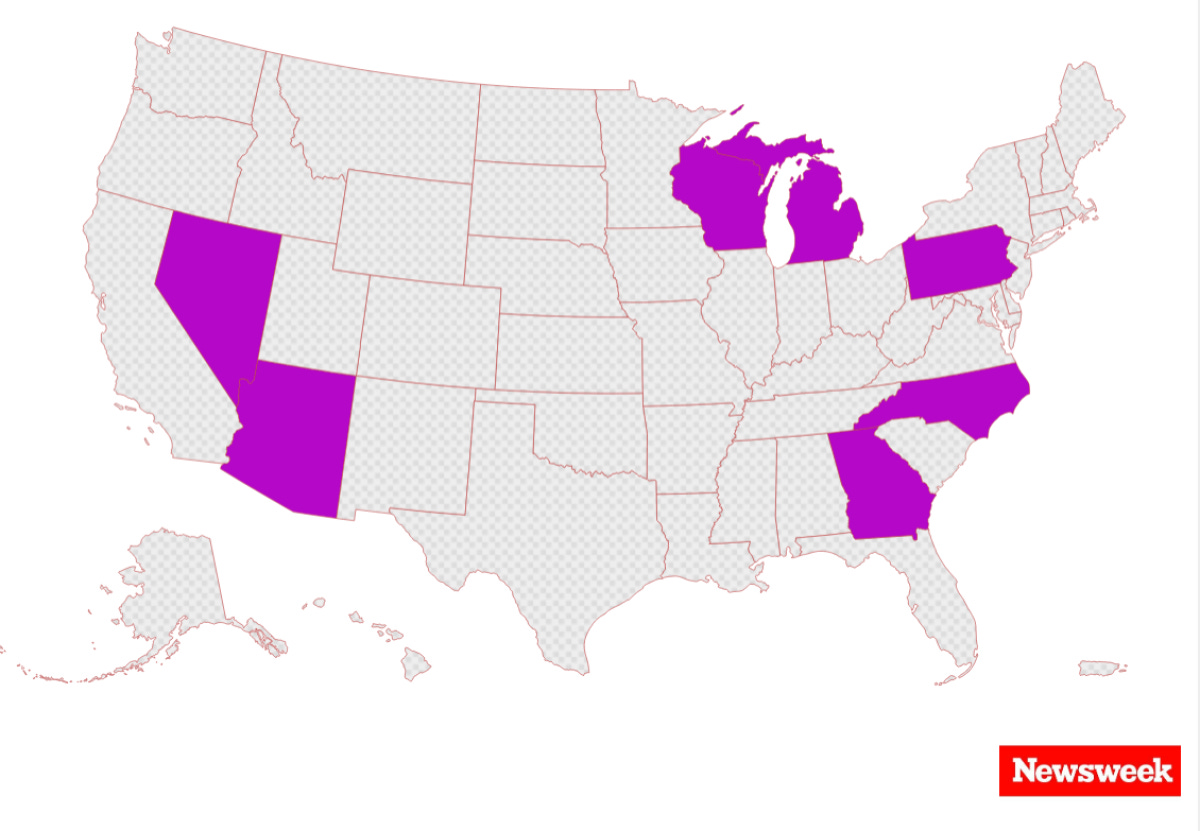The critical role of Battleground aka Swing States in biasing election outcomes
In the realm of political strategy and electoral tactics, battleground states hold a place of paramount importance. Often referred to as "swing states," these pivotal regions can determine the outcome of U.S. elections. This essay delves into the reasons they are so crucial in the electoral process.
What is a battleground state? Battleground states are those states in which neither major political party holds a decisive advantage, making them highly competitive, unpredictable, and won with a razor-thin majority vote. Unlike states that consistently have a majority vote for a particular party, such as California, battleground states can swing either way, hence the term "swing states."
Historically, battleground states have consistently shown substantial and unpredictable fluctuation between parties across different elections. This unpredictability makes them highly contested in every electoral cycle.
Apropos of the 2024 election, in the 2016 election, Donald Trump's victories in battleground states like Pennsylvania, Michigan, and Wisconsin were pivotal to his success. These states, which had previously tenuously leaned Democratic in presidential elections, swung in favor of Trump, contributing to his electoral college victory despite Hillary Clinton winning the popular vote by nearly three million votes.
The Influence of Battleground States on the Electoral College. The Electoral College is a unique element of the American political system that plays a crucial role in determining the outcome of presidential elections. Battleground states as a whole have often produced surprise outcomes of presidential races due to their unpredictable voting patterns and their significant number of combined electoral votes.
The Electoral College comprises electors from each state, equal to the total number of its Congressional delegation: Its number of Representatives plus its two Senators. Hence, the total number of electors for all states is 538, and a candidate needs a majority of 270 electoral votes to win the presidency. This system amplifies the importance of winning individual states, with the exception of the battleground states.
For example California, the most populous state with the fifth largest economy in the world, only has 54 electoral votes. The battleground states have a combined total of 140. Whereas California has always predictably voted Democratic by a wide margin, the battleground state’s always have a razor-thin and unpredicatable partisan majority. Traditional battleground states include Pennsylvania, Michigan, Wisconsin, Georgia, North Carolina, Arizona, Nevada, Florida, and Ohio. In 2024, the first seven in the foregoing list comprise the critical battleground states.
Hence, the nine battleground states combined represent a disportionate number of electoral votes, collectively representing a substantial portion (51.9%) of the 270 electoral votes needed to win the presidency.
Consequently, POTUS candidates prioritize these states in their campaign strategies, investing considerable time, resources, and attention to sway undecided voters. Hillary Clinton’s 2016 didn’t focus enough on the battleground states. In contrast the Harris-Walz 2024 campaign has focused historically large financial resources: For speeches at huge rallys, interviews and townhalls, broadcast and social media ads, and trained canvassers.
Due to their potential to tip the tenuously balanced scales, battleground states receive a disproportionate share of campaign resources. This includes financial investments in advertising, frequent candidate visits, and extensive ground game operations. The goal is to mobilize voters, ensure high turnout among supporters, and persuade undecided or swing voters to cast their ballots in favor of a particular candidate.
Candidates often tailor their policy messages to appeal to the specific interests and concerns of battleground state voters. For example, in states with significant agricultural or manufacturing sectors, candidates might emphasize policies related to trade, jobs, and economic growth. Advancements in data analytics and digital campaigning are also changing the way campaigns engage with battleground states. Micro-targeting of voters through social media, sophisticated polling, and real-time data analysis enable campaigns to fine-tune their strategies and respond swiftly to changing dynamics on the ground. This targeted approach resonates with key demographics and addresses local issues that could influence voter decisions.
The influence of battleground states has fueled ongoing debates about the fairness and appropriateness of the Electoral College system. Critics argue that a direct national popular vote would be a more democratic method of electing the president, ensuring that every vote carries equal weight regardless of geographic location. Proponents of the Electoral College, however, contend that it balances the interests of smaller states and prevents candidates from only focusing on populous urban areas.


